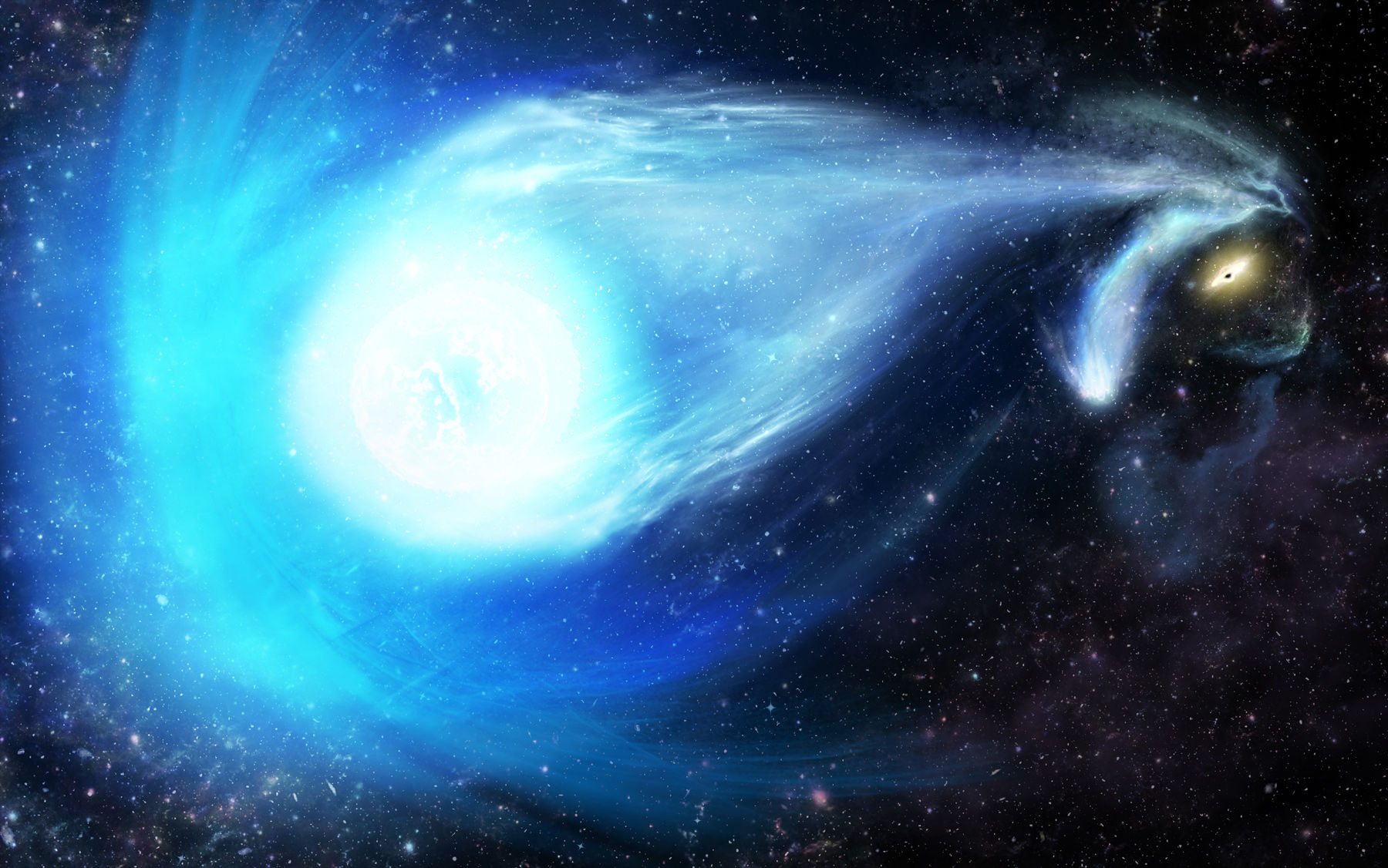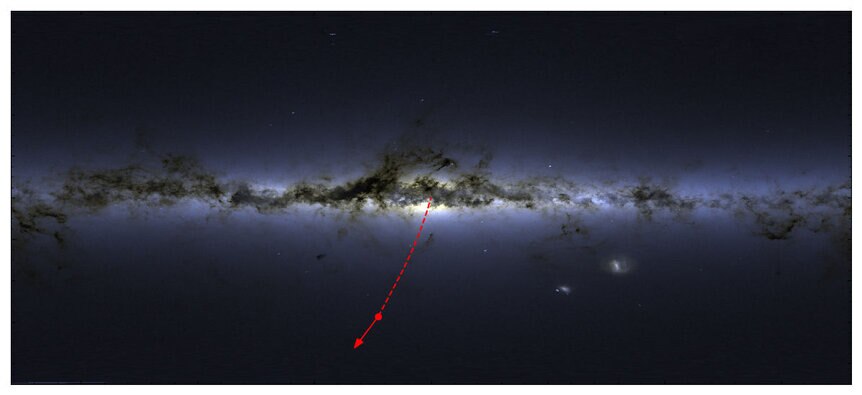Create a free profile to get unlimited access to exclusive videos, sweepstakes, and more!
Our local supermassive black hole shot a star right out of the galaxy

Hypervelocity stars are weird. They were first discovered a couple of decades ago, and like their name suggests, they are stars that are moving. Pretty much every star in the sky is orbiting the center of the galaxy, like the planets orbit the Sun, and those speeds can be fairly high in human terms (the Sun orbits at about 230 kilometers per second).
But hypervelocity stars are moving way faster than that. 500 km/sec or more! There are several ways stars can achieve high speeds; most involve the star to start off life as part of a binary system, two stars in orbit around each other, and then something happens to fling the star away.
Of these, the most brain-crushing is if the binary stars themselves get too close to the supermassive black hole in the center of the Milky Way, called Sgr A* (when spoken, "Sagittarius A star"). Over time the three objects interact, screwing with the binary stars' mutual orbits. After all, the binary stars might have masses a few times that of the Sun, but Sgr A* has a mass of over four million Suns. It wins, every time. Eventually, one of them stars (usually the lower mass one) gets flung away, and the ejection speeds can be fast.
The only problem is that, while a few runaway stars have been seen, none has the right trajectory to have been flicked away by Sgr A*.
Until now. Meet S5-HVS1, a star that is screaming away from the center of the galaxy at a jaw-dropping 1,755 kilometers per second.
It was discovered by accident! At least, the astronomers weren't looking for high-velocity stars. They were performing a survey of stars in the southern hemisphere of the sky to look for stellar streams, literally streams of stars that are usually left over from our Milky Way eating a small galaxy or a tearing apart a cluster of stars. These are identified by their position on their sky as well as having similar velocities. The speeds of the stars are measured by taking a spectrum, then looking for a Doppler shift in the light.
They checked their data for high-speed stars, though that wasn't the main goal. More of a bonus. And they found one. Hoo yeah, did they. S5-HVS1 has a velocity of just over 1,000 km/sec relative to the Sun. As it happens, it's bright enough to be spotted by Gaia, a European satellite that is measuring the positions, velocities, and distances of over a billion stars. When used with their own data, Gaia gave them the direction it was traveling in three dimensions, so they were able to determine the true speed of the star.
It's moving so rapidly that it's unbound to the galaxy; even the immense gravity of the Milky Way can't hold this star back. It's on its way out. Forever.
What they did then was trace the path of the star backwards, to see where it came from. This isn't trivial to do, but the figure they got shows that there is a whopping 90% chance it came from the very center of our galaxy.
That's a smoking gun to an astronomer. That, plus the speed, really indicate this star was slingshot out of the galaxy by Sgr A*.
The star itself is interesting. It's an A star, a little over twice the mass of the Sun and subsequently hotter. It looks to be at most 500 million years old, making it rather young. It's roughly 29,000 light years from the Sun — a bit of a long walk, but on a galactic scale that's actually rather close — and at its current speed it would have taken just under 5 million years to reach that point from the galactic center.
The authors note that their calculation for the ejection speed does not include the gravity of the black hole itself, which would dominate while the star was less than a few light years from the center; including that means it may have been ejected at upwards of 8,000 km/sec before the black hole's gravity slowed it! That's nearly 3% the speed of light.
Interestingly, there's a clutch of relatively young stars orbiting the galactic center very close in, including the stars that are seen to physically move as they orbit Sgr A*. Some of these form a disk-shaped structure around the black hole, and it's certainly possible this star came from there.
It's not clear what happened to the other star in the binary. It likely fell into Sgr A*, an ignominious fate. It may have been shredded when that happened, which would have produced a huge blast of energy, as we've seen from other similar events in other galaxies.
So what's the fate of S5-HVS1? A-type stars of this mass live for a billion years, and it's only half that age. At some point it will expand into a red giant, blow off its outer layers, and create a short-lived planetary nebula. In fact, at its ridiculously rapid speed, it'll be ramming through the thin gas between galaxies pretty hard; the gas it ejects won't form a shell around it like most planetary nebulae, but instead be left behind like a polite belch in a windstorm.
After that, all that will be left is a tiny and quite hot white dwarf barreling into intergalactic space. By then it will have traveled about 6 million light years, far enough to be outside our Local Group of galaxies. What a trip it will have undertaken! A lonely one, for certain, but with quite a view. And quite a first step to get it started.
















